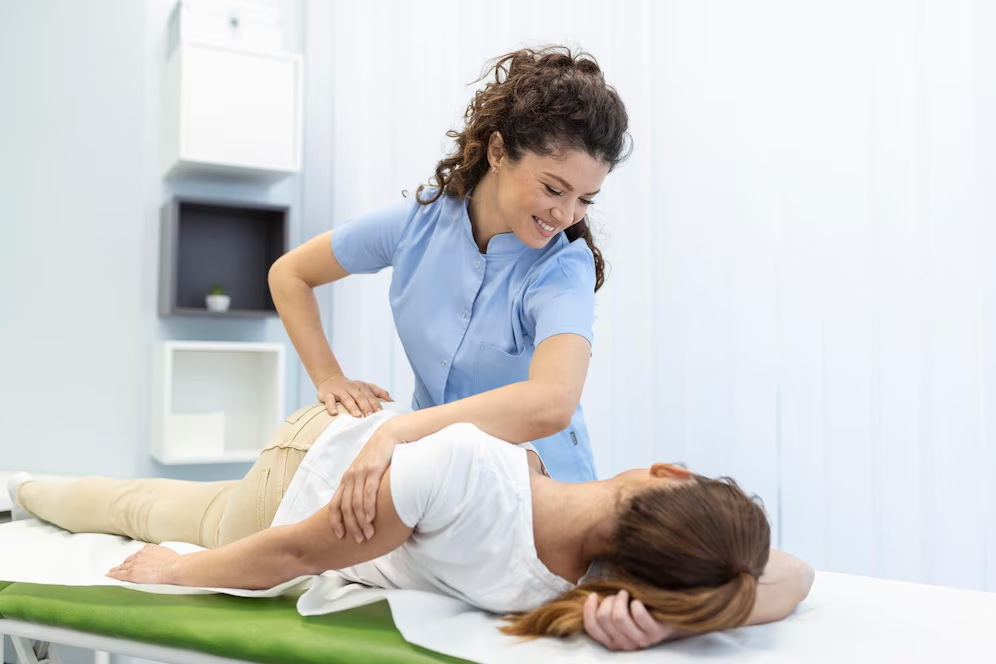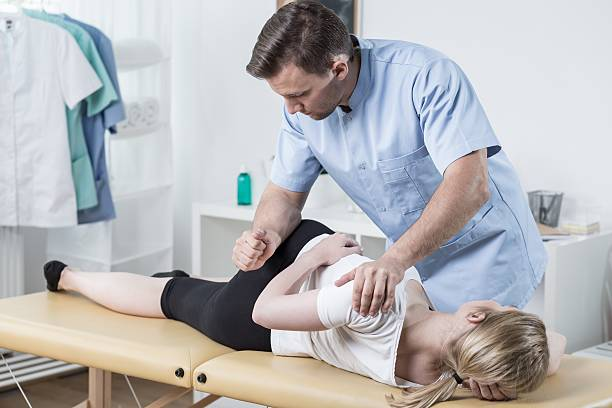Getting Started in Osteopathy: Beginner’s Guide and Resources

Osteopathy is one of the fast-emerging holistic healthcare practices, offering manual therapy techniques to work towards overall wellness. If you are a beginner in osteopathy, then knowing how to start your journey will be very important.
This blog lists basic recommendations for beginners, from learning basic principles to educational resources and ways of getting started with this rewarding and effective approach to healthcare, whether you’re looking to build a career in osteopathy or seeking treatment.
What basic concepts should beginners know about osteopathy?
Beginners should know that osteopathy focuses on the body’s structure and self-healing capabilities. It involves manual techniques to treat musculoskeletal issues, promoting overall health by restoring balance.
This is based on the principle that when a human’s structure is in equilibrium, the body heals itself. An osteopath manipulates muscles, joints, and tissues with manual techniques to improve circulation and function.
Beginners to this approach ought to know that osteopathy includes musculoskeletal issues, especially back pain, but mainly enhancing one’s overall well-being to support the body’s natural healing processes. It is an integrative approach to understanding how different structures of the human body can function to achieve health.
How can I learn the basics of osteopathy as a beginner?
To learn the basics of osteopathy, start with online courses, textbooks, and professional association websites. These resources provide foundational knowledge of osteopathic principles and techniques.
For osteopathy beginners, online courses those found on Coursera or Udemy, for example, are good entry points into the principles of osteopathy. Basic texts are foundational places to dig in for a better understanding of books such as “An Osteopathic Approach to Diagnosis and Treatment.”.
Helpful informative material also exists in the sites of professional organizations, like the American Osteopathic Association (AOA) or the General Osteopathic Council (GOsC). The domain of knowledge offers explanatory information through articles, videos, and webinars regarding the basic principles of osteopathy and their application.

What is the first step to becoming an osteopath?
The first step to becoming an osteopath is enrolling in a recognized osteopathy program. These programs typically take 4-5 years and include both theoretical and clinical training.
The first step towards becoming a licensed osteopath is through the entry of an accredited program in osteopathy. Osteopathy programs are usually four to five years long with heavy emphasis on anatomy and physiology; biomechanics of some varying mechanical methods of applying forces to body movements; and manual therapy techniques.
Since clinical practice is part of the course, practical training is obtained from translating theoretical knowledge into practical application. Later, graduates are licensed to work as practicing osteopaths after passing the relevant licensing test, though countries vary in their requirements for licensing.
What online resources are available for osteopathy beginners?
Online resources for osteopathy beginners include courses, webinars, and articles from professional organizations. Websites like AOA, GOsC, and Coursera offer introductory materials and training programs.
There are many web-based resources that would quench the interest of a beginner, such as courses on Coursera and edX, or even a short online course that gives an overview of osteopathic techniques and theory.
Professional organizations like AOA (American Osteopathic Association) and GOsC (General Osteopathic Council) offer free articles, research papers, and webinars introducing basic osteopathic concepts. These resources are more than suitable for students in advance of understanding the core principles of osteopathy before opting for more formal education.
How important is clinical training in osteopathy?
Clinical training is essential in osteopathy as it allows students to apply theoretical knowledge in practical settings. It helps them develop the hands-on skills necessary to treat patients effectively.
Practical training is one of the most important components of osteopathic studies. It gives students the possibility to work with real patients on whom they may practice manual techniques under strict supervision. Training improves all diagnostic skills and shows a way to solve a variety of musculoskeletal disorders and the possibility of treatment tailored to meet individual patient needs.
Thus, hands-on training is the most important preparation for future osteopaths in their professional activities, since students will be able to perform effectively and make proper use of what they have learned.

What textbooks are recommended for beginners in osteopathy?
Textbooks that are recommended for beginners in osteopathy include “Foundations of Osteopathic Medicine” and “An Osteopathic Approach to Diagnosis and Treatment.” These books cover core principles and practical techniques.
For the first years, core texts such as “Foundations of Osteopathic Medicine” from AOA and “An Osteopathic Approach to Diagnosis and Treatment” by DiGiovanna are primary holistic considerations in the field. They encompass the basis as it relates to osteopathic principles, methods of manual therapy, and clinical diagnosis. These texts are extremely popular in osteopathic programs and one can really use them if better understanding of osteopathy’s approach to health is being sought after.
How can mentorship help beginners in osteopathy?
Mentorship helps beginners by providing guidance, knowledge sharing, and practical insights into the field. It accelerates learning and professional growth through hands-on experience and advice.
An invaluable resource for new learners, mentorship gives a chance to learn from experienced practitioners. A mentor would help in giving guidance on developing manual techniques, getting through the problems of patient care, and understanding the business needs of running a practice.
Hence, feedback and knowledge sharing accelerate learning as beginners get insights that go beyond textbooks. Meeting up with a mentor also fosters professional networking and may lead to better avenues in the future.
In Conclusion
Being an osteopath is a very rewarding career for one who wants to be in this holistic healthcare field, and getting there requires a pretty strong foundation of both theoretical knowledge and clinical experience. To get started, many different pathways are possible-from beginner resources, and accredited programs, to mentorship. It will all go to getting one’s journey into osteopathy started. Using the right tools and guidance can help beginners turn this very satisfying career.

